2013 Project Year End Report
Alisa Prager (MS2, Columbia University College of Physicians and Surgeons)
Project: To expand the CJR Nishimiya Fellows program to provide opportunities for more medical students to go to Fukushima.
Contact: alisa.prager@gmail.com
Project Summary and Update
My 2012-2013 JMSA scholarship project was to raise more awareness about the earthquake and tsunami that struck Japan last year, with a focus on mental health in the context of disaster relief. I put my efforts primarily into two distinct projects: promoting awareness through the mental health symposium held by the Consortium for Japan Relief (CJR) at Columbia University, and organizing the student exchange program, which allowed interested students to travel to Fukushima to learn about the disaster. This student exchange program is now called the Nishimiya Fellows Program in honor of the late Ambassador Shinichi Nishimiya, Deputy Foreign Minister and former Japanese Ambassador to New York, who greatly contributed to the effort to aid those affected by the March 11th tsunami and earthquake.
Consortium for Japan Relief Mental Health Symposium
As a member of CJR, I helped organize an academic symposium on the state of mental health in Tohoku, which was held on April 4th, 2012. This symposium featured world renowned guest speakers who gave talks on different issues related to mental health, including radiation fears, post-traumatic stress disorder, and new mental health care programs in Tohoku. During this symposium, I gave a brief presentation on the student exchange program. For more information, please see website: http://consortiumforjapanrelief.org/
2012 Nishimiya Fellows Program (previously called the student exchange program)
As the student coordinator for the Nishimiya Fellows Program, I helped organize the first trip to Fukushima, which was held from July 29th to August 3rd, 2012. Three students including myself traveled to Fukushima to learn about the disaster first-hand through the Education Center for Disaster Medicine at Fukushima Medical University (FMU). The trip consisted of 2 days of lectures and training sessions on radiation and disaster medicine at FMU, and 3 days of volunteering and visiting community partners. The program was modeled after the radiation disaster medicine seminars previously held by the center for 5th year Japanese medical students. In addition, students attended the JAMSnet Tokyo conference at Tokyo Medical University, and had the opportunity to meet 5th and 6th year Japanese medical students at FMU.
Prior to the trip, I communicated information regarding the number of student participants, timing and duration of trip, and desired program content to Dr. Kumagai (Education Center for Disaster Medicine, FMU) to help plan the program, with guidance from Dr. Homma, Dr. Takei (JAMSnet Tokyo) and others. I also communicated information to other student participants: Evan Rausch (MSII, Columbia University College of Physicians and Surgeons) and Kirsten Homma (Dartmouth University, CJR student leader). JAMSnet provided the funding to students.
The goals of this trip were to gain exposure to the topics of radiation and disaster medicine, to learn about the impact of nuclear disaster on mental health, and to gain a better understanding of the current situation in Fukushima. In addition, as this was the first student trip to Fukushima, another aim was to assess our experiences in order to plan for future years.
During our stay, we spent the first two days attending seminars on the basics of radiation biology, the history of past nuclear disasters and the current situation in Fukushima. We learned how to examine the thyroid gland with an ultrasound, perform disaster triage, and respond to a radiation injury case using a manikin. Then we spent three days visiting key regions and interacting with individuals who were directly affected by the disaster. At the mental health outreach center for elderly residents, we measured blood pressure, sang a song, and talked to residents about their experiences living in temporary housing. While volunteering at a community center for families living in temporary housing, we observed worried mothers consulting physicians about the radiation levels in parks and the safety of Fukushima produce. We also visited the base camp for the Fukushima Daiichi cleanup and learned about the measures taken to clean the site and decommission the nuclear power plants, which could take decades to complete. Lastly, we visited one region destroyed by the tsunami and met a father who was building a playground in honor of the son he had lost. This weeklong program gave us a much deeper understanding of the human scale of the disaster and the need to continue supporting these regions. Due to the success of the program, we decided to continue it next year and give additional students the opportunity to learn about disaster medicine and volunteer in Fukushima.
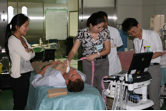
Figure 1: We learned how to use an ultrasound to examine the thyroid gland
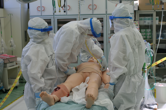
Figure 2: We wore protective gear and learned how to respond to a nuclear accident using a manikin
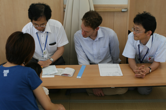
Figure 3: We visited a community center and learned about mothers’ concerns regarding radiation levels in the environment
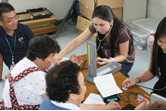
Figure 4: We measured blood pressure at a community center for elderly residents living in temporary housing
Upon returning to the U.S, we gave a presentation about our experiences to members of the CJR at Columbia University. The program was very well received and we began planning for the 2013 summer. I wrote the description and application materials as well as the selection criteria for the program and distributed the documents to relevant websites and list serves. I also created the Nishimiya Fellows Program website. We received numerous applications from well-qualified applicants and selected 3 students from Columbia University to participate. I communicated with Dr. Kumagai to coordinate the logistics for the program in conjunction. Furthermore, I contacted participants and provided information about transportation, housing, itinerary and finances. Details about the 2013 summer program will be reported in the 2013-2014 JMSA scholarship report.
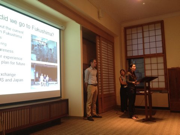
Figure 5: We gave a presentation about our experiences to CJR faculty and student members in September 2012
Spring 2013 Activities: CJR 2013 Symposium
To commemorate the 2nd year anniversary of the disaster, members of CJR helped organize a symposium titled “The Great East Japan Earthquake: Creative Responses and Social Imagination” held at The Diana Center at Barnard College on March 10th, 2013. This symposium focused on creative responses to the 2011 Great East Japan Earthquake, and included presentations by renowned scholars, filmmakers, physicians, and performance artists. Kirsten Homma and I were invited to give a 10-minute presentation on the Nishimiya Fellows Program at the symposium. The focus of the presentation was to showcase a successful CJR student led initiative and introduce the purpose and content of the program. We also advertised the 2013 summer program and provided information on the application process. More than 200 guests attended the symposium. For more information please see website: http://nyjapan311.org/about-the-symposium/
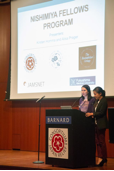
Figure 6: We gave a 10 minute presentation on the Nishimiya Fellows Program to a large audience at The Diana Center at Barnard College
